Solar-Powered UAV for Perpetual Flight
2019-2020
Since a very young age, I have been deeply fascinated by AtlantikSolar, a 5-meter wingspan Solar-Powered fixed-wing UAV that achieved 81 hr of continuous flight.
So during my undergrad, I decided to pursue my dream project, to make a fixed-wing UAV that can fly perpetually, and at the same time carry necessary payloads to continuously gather environmental data. The aim was to make the system robust enough to address various environmental challenges our world faces : Wildlife Conservation, Poacher Monitoring, Pollution, and Forest / Farm Fire.
For all these remote area applications, the potential of Solar-Powered UAVs is enormous.
I divided my work into two parts : Solar-Powered UAV Development and Sensor Fusion Module Development.
Solar-Powered UAV Development :
I designed and built a 3.1-meter wingspan UAV for this study. The UAV was built with balsa wood ribs, carbon fibre wing spars, and glass fibre to keep the overall design compact and lightweight.
1.) Design Simulations :
I first used XFLR5 to analyse the design parameters to provide an optimum gliding ratio for the given design. A 3.1-meter wingspan UAV design with a dihedral angle of 3 degrees and an angle of attack of 4 degrees was found to be the most appropriate.
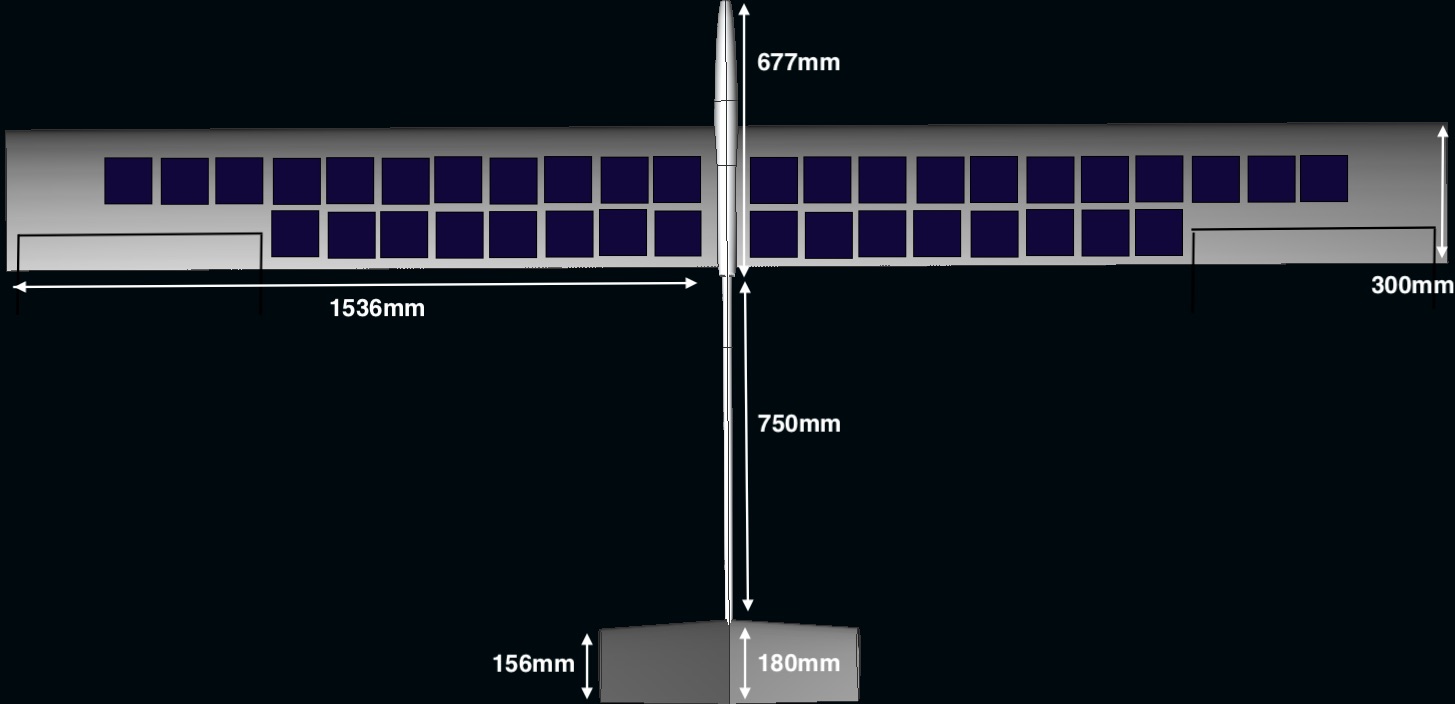
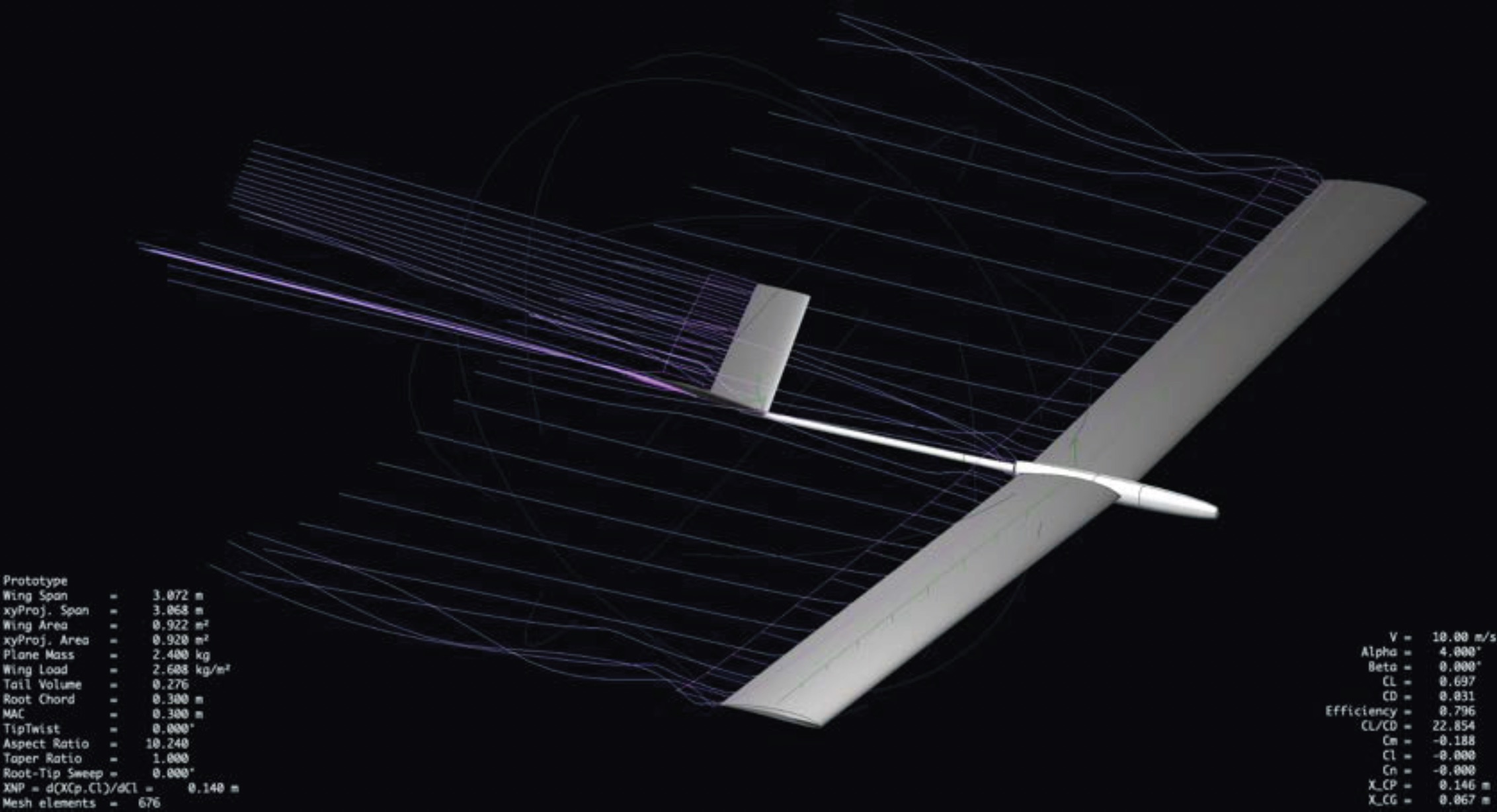
The UAV flight Parameters Calculations were done keeping Level Flight conditions in mind. During Level Flight :
- Thrust (T) = Drag Force (D) = ρCTDSV2 = 1.95N (the thrust produced by the propeller(T) compensates for the drag force(D))
- Lift Force Generated by wings (L) = Weight of UAV (mg) = ρCLSV2 (the lift force(L) generated by the wing compensates for the weight of the UAV(W))
- The Power Required for Level Flight was calculated using : Preq = T*V = 15.6W
- The Power required for the Hand Launch of the UAV was calculated by keeping the thrust-to-weight ratio of the UAV greater than 0.6/1 = 190W
- Gliding Ratio was calculated as : CL / CTD= 23
2.) Motor Simualtion :
After doing motor simulations on eCalc software, it was found that the EMAX MT-3515 brushless DC motor with 13 by 6 folding propellers and 40A ESC will be a suitable option considering thrust-weight ratio, power consumption, and temperature as the factors.
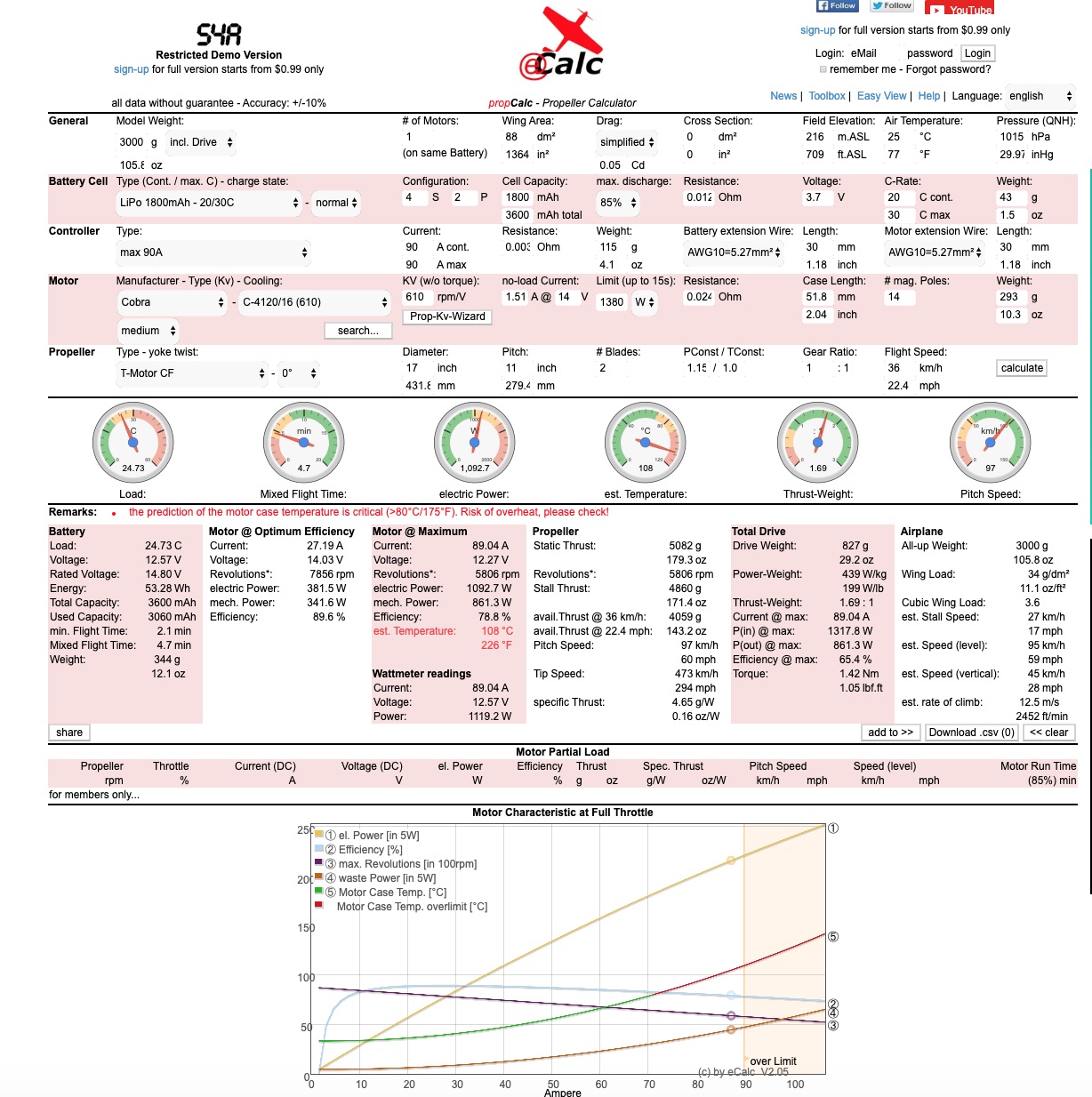
3.) UAV Development :
- Prototype 1
I first started with this custom-built 1.5-meter wingspan UAV purchased from Aliexpress to get familiar with glider design. It came with a 3s 500mAh battery pack and I flight-tested it extensively to integrate the learnings into my design.
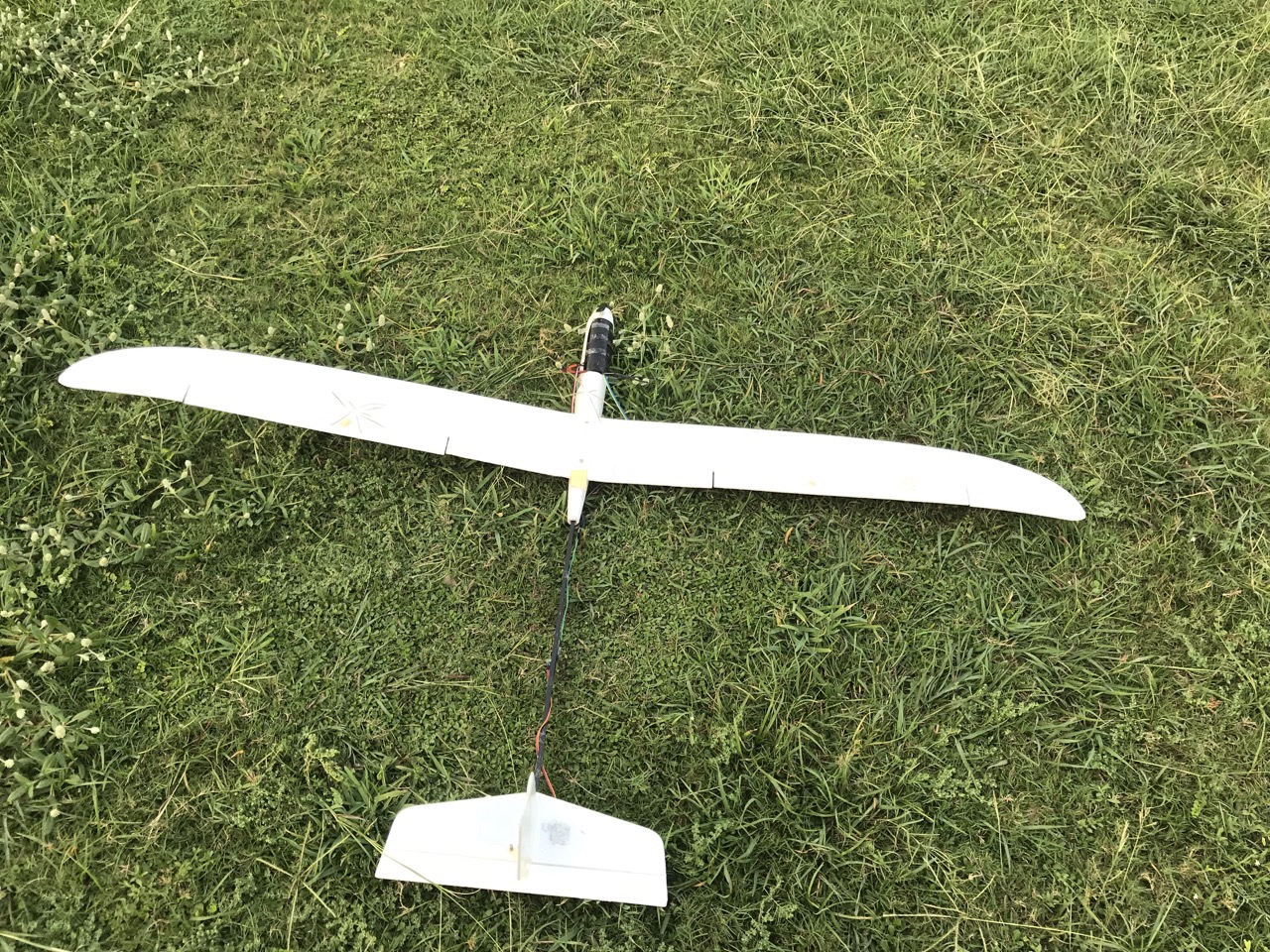
- Prototype 2
The UAV was built with balsa wood ribs, carbon fibre wing spars, and glass fibre to keep the overall design compact and lightweight.



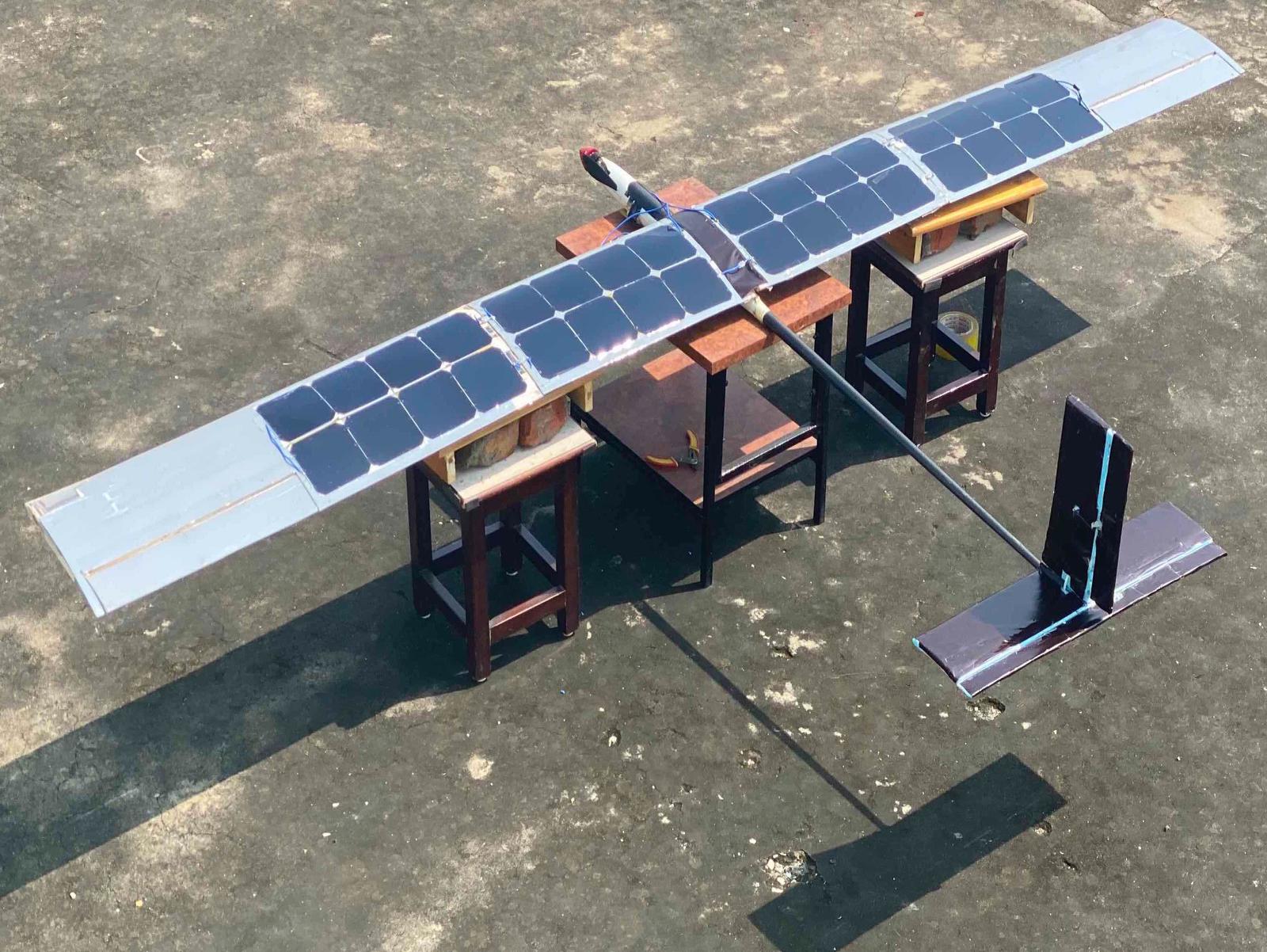
4.) System Electric Design :
I used a 4s 3300mAh Lipo battery pack to meet the thrust requirements of the motor. In the design, 38 solar cells were chosen, as they would fit easily on the wing and generate around 100W of power under ideal conditions. So, with this design configuration, we can completely rely on solar power during level flight (Preq Level Flight = 15.6W) and at the same time, access power generated by solar could be used to recharge the battery. I used extremely lightweight and flexible Sunpower C-60 solar cells, which were generously provided as in-kind support from Sunpower. All solar cells were connected in series and laminated on the wings, to bring them sufficient strength.
For the Solar charge controller, I used a TI-BQ24650 MPPT solar charger.
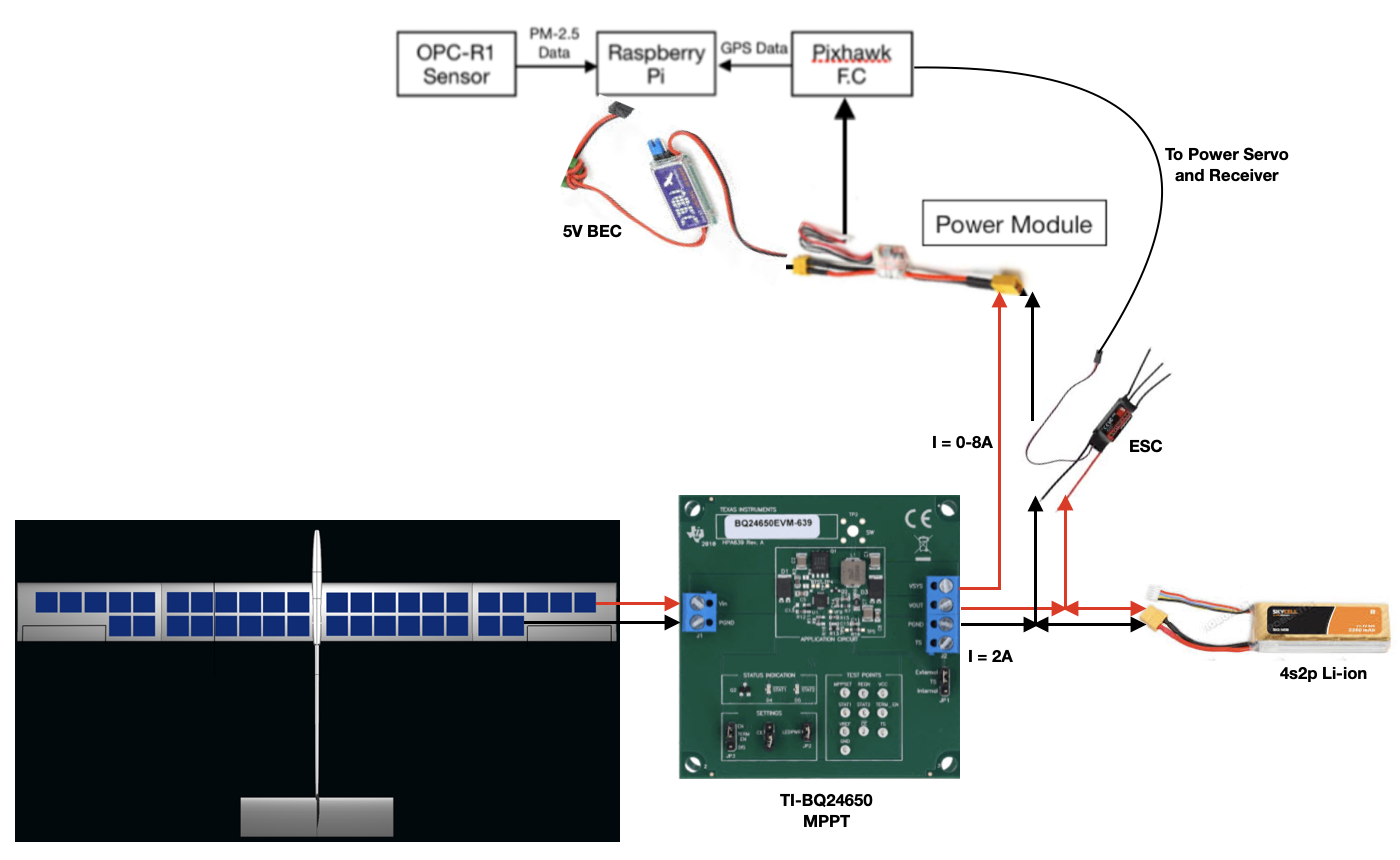
Sensor Fusion Module Development :
I focused on designing and building a lightweight and low-cost air quality sensor and camera data fusion module with edge (AI) processing capabilities on the Raspberry Pi. This sensor fusion module was integrated into the UAV as the payload. The concept was, that with solar power, UAV can fly perpetually at the same collect air quality data and capture images, with a focus on addressing various environmental challenges our world faces.
This data fusion module consisted of a low-cost OPC R1 sensor, Pixhawk Flight controller and Raspberry Pi with an image sensor.
-
The OPC-R1 sent PM2.5 data to Raspberry Pi using an SPI to USB converter. OPCR1 weighs about 30 grams and is very ideal for UAV applications.
-
The Raspberry Pi used the Mavlink protocol to communicate with the Pixhawk flight controller using a UART connection. Pixhawk sent GPS data and other flight parameters to Raspberry Pi.


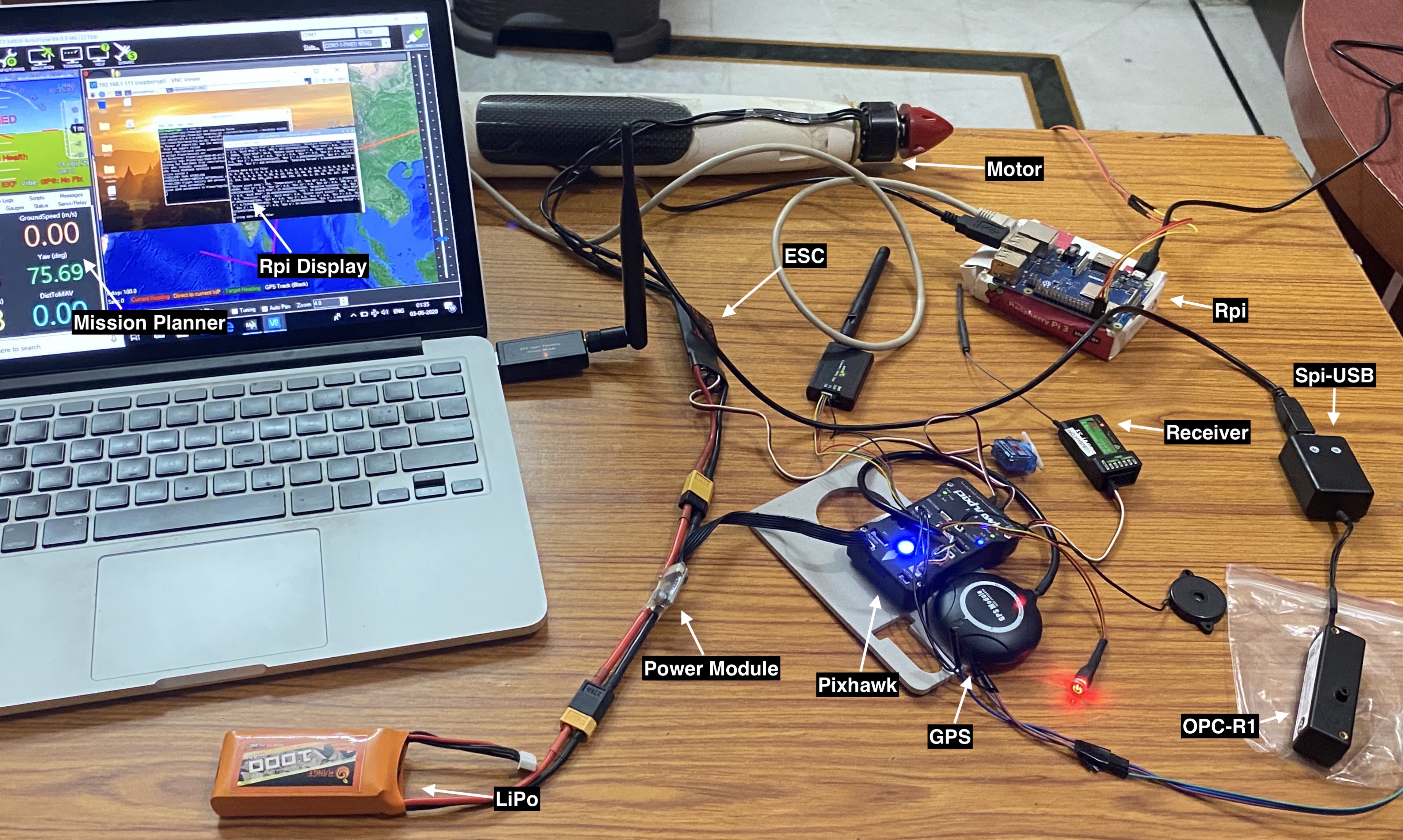

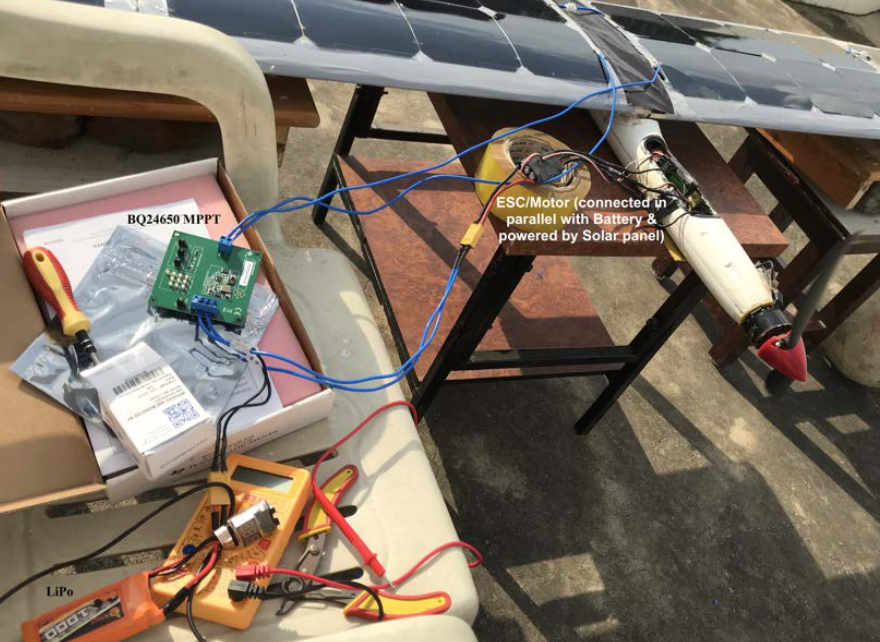
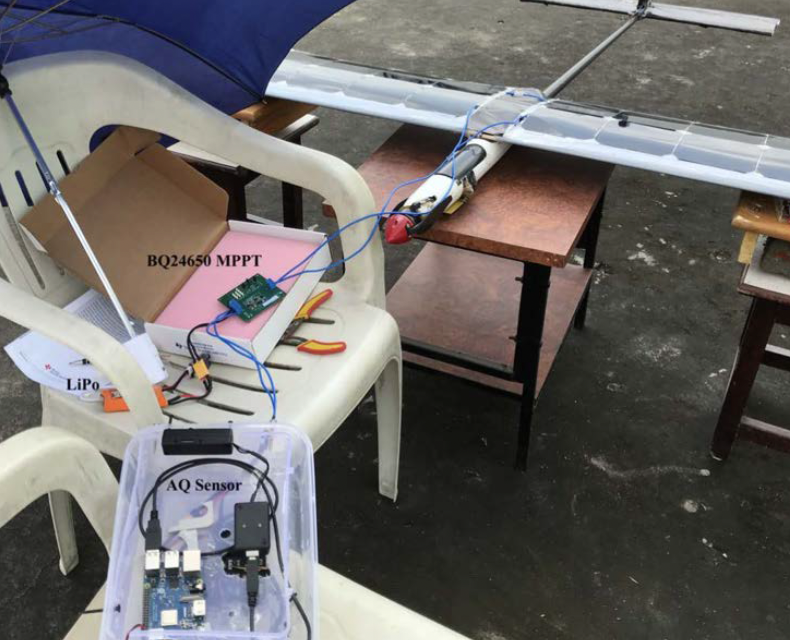
Various flight tests of the UAV were successfully conducted at around 30 meters altitude, especially keeping in mind to improve the flight characteristics and make it capable of carrying the payload of the data fusion module.
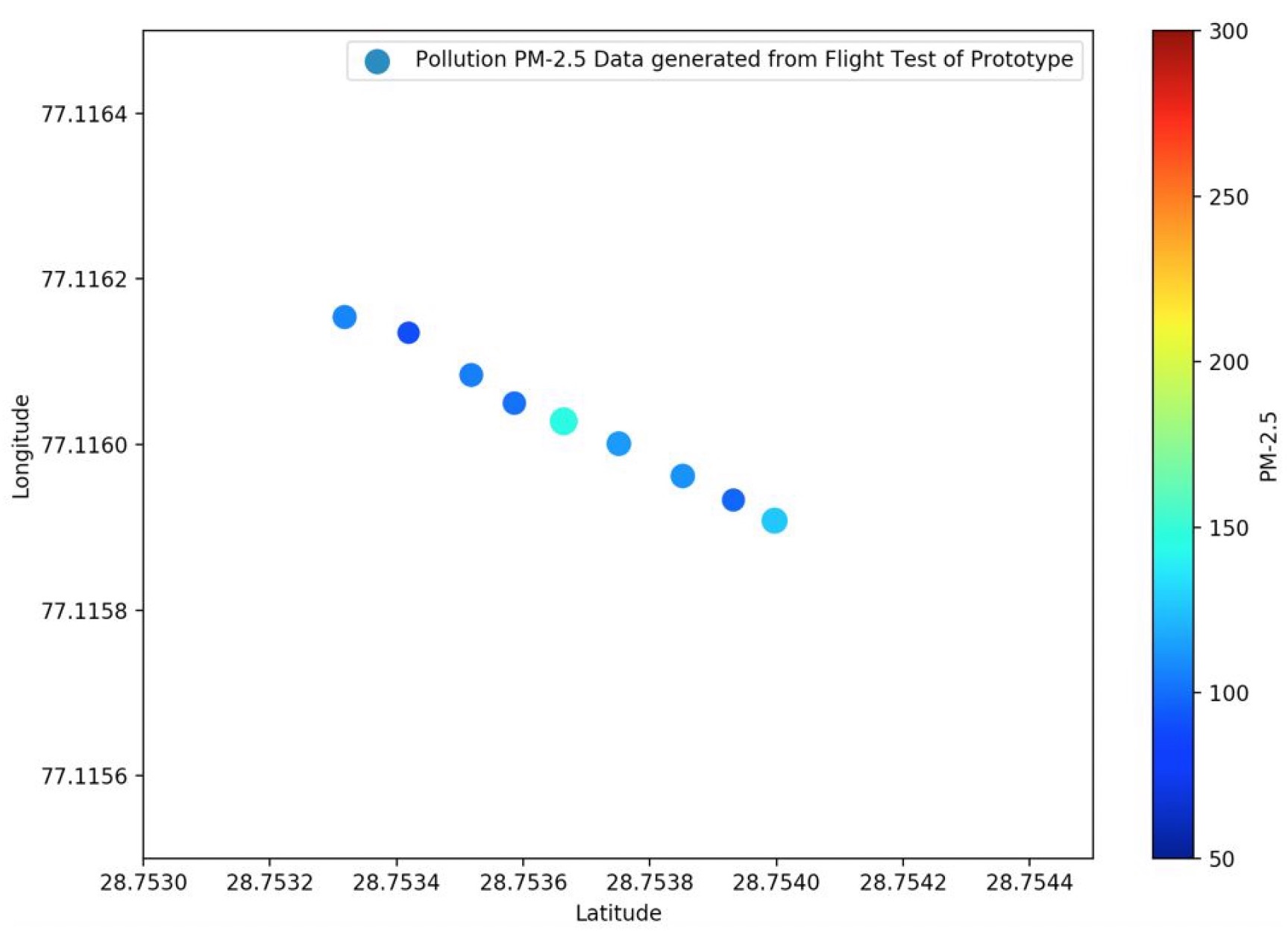
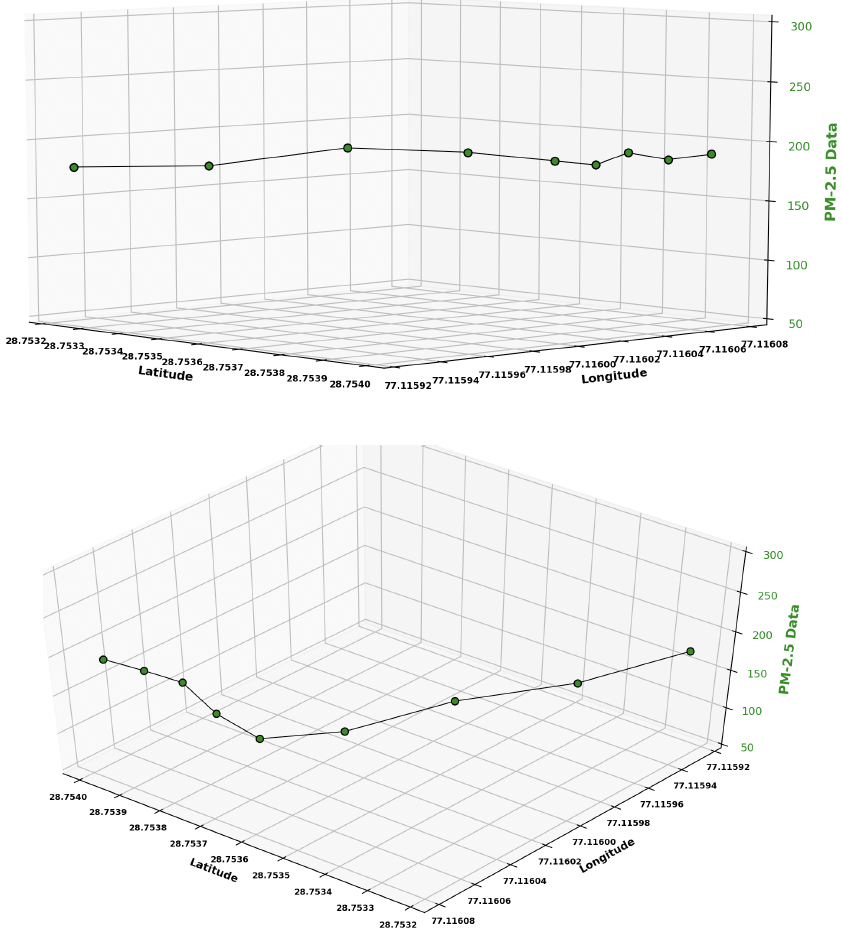
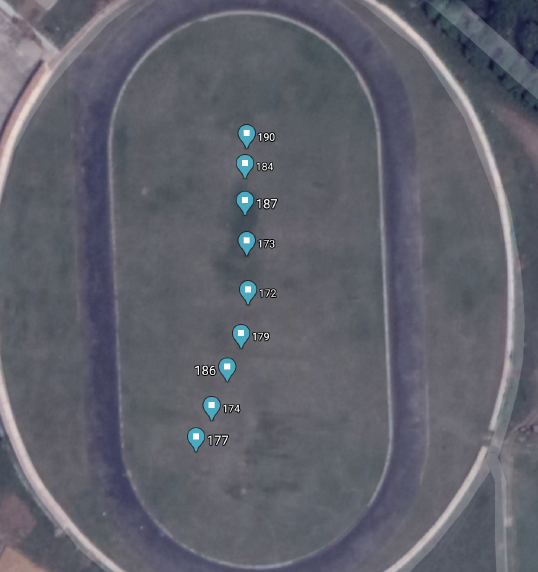
Note : This work happened during the peak Covid wave in 2020, so I had to leave the testing in between due to the lockdown. But this dream remains, and I will again start work on this one day!
Project Supervisor : Prof. S. Indu
Work Funded by : Delhi Technological University and SunPower Energy Company
Script 2: Github Repo (to run Tflite models on Raspberry Pi for detecting fire)